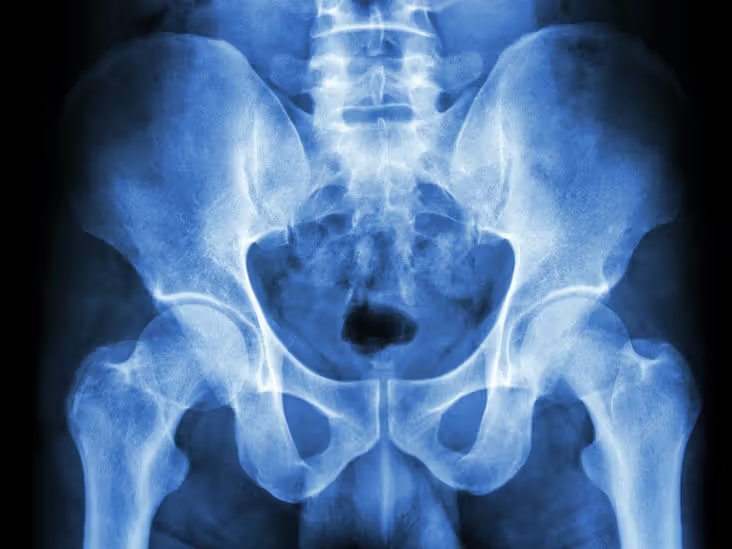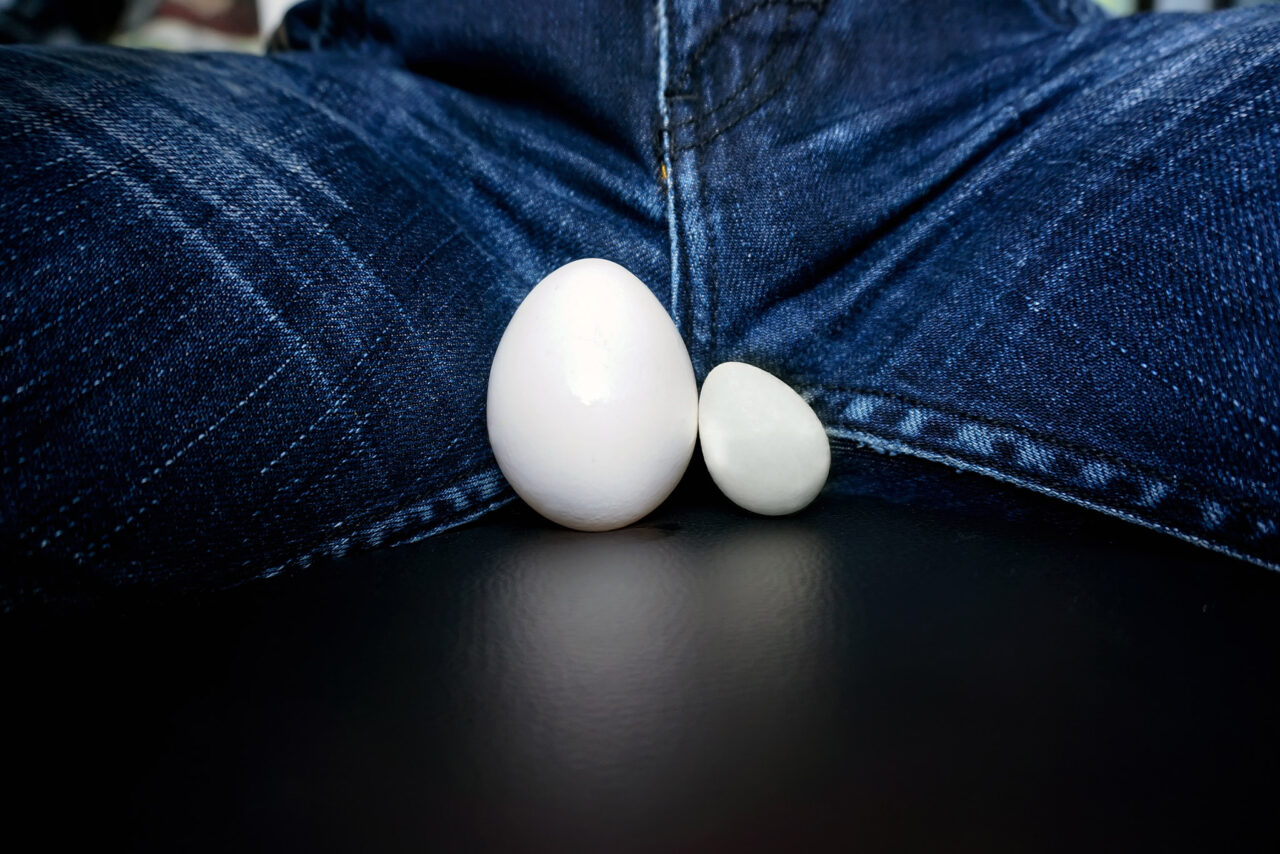Get Expert Care and Treatment for Undescended Testicles with Dr. Mahesh K Dhanjee
Undescended testis (UDT) is the second most common paediatric surgical condition after inguinal hernias. It refers to a testis that is not in the scrotum by the age of three months because of a failure of normal descent. Five per cent of boys have a UDT at birth, 1–2% at three months and 1% at one year; hence, it is uncommon for testes to descend after three months.
Navigating the complexities of paediatric urological health can be daunting for parents. Among these, undescended testicles, stand out as a significant concern. Undescended testicle (also known as cryptorchidism) is a condition when the testicle has not descended into the scrotum. Distinct from a retractile testis, it is a common yet treatable issue among children who have a family history of cryptorchidism, premature birth, and any condition that could affect foetal growth.
Depending on the location of the undescended testicle, the urologist will recommend either watchful waiting (to see if the testicle will descend spontaneously) or surgery. If surgery is to be performed, it is best done before the child turns 18 months old. In some cases, imaging tests such as ultrasound may be recommended to get a clearer picture of the location of the undescended testicle(s). Early detection and diagnosis are crucial in order to prevent potential complications later in life.
Undescended testis (UDT) is the second most common paediatric surgical condition after inguinal hernias. It refers to a testis that is not in the scrotum by the age of three months because of a failure of normal descent. Five per cent of boys have a UDT at birth, 1–2% at three months and 1% at one year; hence, it is uncommon for testes to descend after three months.
Navigating the complexities of paediatric urological health can be daunting for parents. Among these, undescended testicles, stand out as a significant concern. Undescended testicle (also known as cryptorchidism) is a condition when the testicle has not descended into the scrotum. Distinct from a retractile testis, it is a common yet treatable issue among children who have a family history of cryptorchidism, premature birth, and any condition that could affect foetal growth.
Depending on the location of the undescended testicle, the urologist will recommend either watchful waiting (to see if the testicle will descend spontaneously) or surgery. If surgery is to be performed, it is best done before the child turns 18 months old. In some cases, imaging tests such as ultrasound may be recommended to get a clearer picture of the location of the undescended testicle(s). Early detection and diagnosis are crucial in order to prevent potential complications later in life.

Causes and Risk Factors: Navigating the Path to Diagnosis
Despite advancements, the precise cause of this condition, where the testicle is positioned lower than normal or fails to descend into the scrotum, remains elusive. However, it is widely acknowledged that a combination of genetic and environmental factors plays a significant role in increasing the risk of developing undescended testicles. These include:
Maternal Exposure to Adverse Conditions: One of the primary risk factors is the exposure of the mother to harmful substances. This includes a broad range of toxic substances, chemotherapy treatments, and radiation. These conditions during pregnancy can adversely affect the normal development of the testicles in the foetus, leading to them being lower than normal or undescended.
Premature Birth: Babies born prematurely are at a higher risk for undescended testicles. The developmental processes, including the descent of the testicles, may not have been completed in the timeline of a standard gestation period, leading to this condition.
Family History and Genetic Predispositions: A family history of undescended testicles or related reproductive issues significantly raises the probability of this condition. This factor suggests a genetic component, where certain inherited traits could predispose a child to having a testicle lower than normal.
Low Birth Weight: Infants with low birth weight are more prone to having undescended testicles. This condition is often associated with incomplete development, which can include the failure of the testicles to descend properly.
Maternal Diabetes: Mothers with diabetes, especially those with uncontrolled or poorly managed conditions, may have a higher likelihood of giving birth to children with undescended testicles. The exact mechanism linking maternal diabetes to this condition is a subject of ongoing research, but it is believed that the metabolic environment in utero plays a crucial role.
Early Diagnosis: Key to Effective Treatment
The primary method for diagnosing an undescended testicle is through a physical exam, typically conducted at birth or during a subsequent checkup. During this examination, healthcare providers assess the location of the testicles, identifying whether they have descended properly into the scrotum. Detecting a testicle that is lower than normal or not in the scrotum at all is a key indicator of this condition.
In cases where physical examination results are inconclusive or if there’s a need to differentiate between an undescended testicle and a retractile testis, imaging tests become invaluable. X-ray or ultrasound imaging tests are commonly employed to ascertain the exact position of the testicles.
Ultrasound Imaging: This non-invasive technique uses sound waves to create images of the inside of the body. In the context of an undescended testicle, an ultrasound can help locate the testicle, especially if it’s lower than normal or not palpable during the physical exam.
X-ray Imaging: While less common than ultrasound for this specific condition, X-rays can sometimes be used to gain additional insights, particularly in complex cases.


Proactive Treatment for Optimal Health
In many cases, the testicle descends into its proper place in the scrotum within the first few months after birth. This natural process is a crucial developmental milestone. However, When a baby reaches the age of 6 months and the testicle has not descended on its own, it’s time to seek the expertise of a specialist.
If the decision is made to treat an undescended testicle surgically, the procedure, known as orchidopexy, is typically recommended when the baby is between 6 to 12 months old. This timing is considered optimal for achieving the best results. The surgery involves repositioning the testicle into the scrotum and securing it in place, a procedure that is both safe and effective.
Early treatment of an undescended testicle is not only about positioning the testicle correctly; it also plays a significant role in the child’s future health. Early surgical intervention can markedly reduce potential fertility issues later in life. Additionally, it decreases the risk of other complications, such as testicular cancer, which is slightly elevated in undescended testicles.
Retractile Testis Vs Undescended Testicle: Key Differences
In paediatric urology, understanding the difference between a retractile testis and an undescended testicle is essential for appropriate diagnosis and treatment. Both conditions involve the positioning of the testicle, but they differ significantly in nature and management.
An undescended testicle, a condition medically known as cryptorchidism, occurs when one or both of the testicles fail to descend into the scrotum before birth. This means the testicle is lower than normal, often located in the abdomen or somewhere along the path to the scrotal sac. This condition is one of the most common genital issues encountered in paediatrics and requires medical attention for several reasons, including potential fertility problems and increased risk of testicular cancer.
In contrast, a retractile testis refers to a testicle that moves back and forth between the scrotum and the groin area. This condition is often considered part of normal development. The retractile testis is different from an undescended testicle in that it can be manually guided into the scrotum during a physical examination and typically remains there temporarily without retraction.
Understanding the differences between a retractile testis and an undescended testicle is crucial for effective management and treatment. While an undescended testicle, characterised by the testicle being lower than normal and requiring surgical correction, is a more serious condition, a retractile testis often resolves naturally. Parents and caregivers should seek regular paediatric assessments to ensure the healthy development of their child.

Choosing Dr. Mahesh K Dhanjee for Your Child’s Urological Care
With Dr. Mahesh’s extensive experience in paediatric urology, parents can rest assured that their child’s undescended testicle condition will be managed with the utmost care and expertise. His commitment to early intervention and comprehensive treatment plans promises the best possible outlook for children with cryptorchidism.
Consult Dr. Mahesh K Dhanjee for a thorough examination and expert guidance if you suspect your child may have an undescended testicle or a testicle lower than normal. His approach combines advanced medical knowledge with a compassionate understanding of your child’s needs, ensuring a safe and successful journey to health.
Frequently Asked Questions
Is it normal for a testicle to be lower?
Yes, it’s normal for one testicle to hang slightly lower than the other for balance and comfort. However, if the difference is significant, consulting a specialist like Dr. Mahesh is advisable to rule out any underlying conditions.
Why did my balls drop so low?
Testicles may hang lower due to various factors like temperature changes, ageing, or relaxation of the scrotal sac. Dr. Mahesh can provide a personalised assessment to determine if it’s a normal variation or a concern.
What are signs of testicle problems?
Signs include pain, swelling, a noticeable size difference, or a lump. Dr. Mahesh recommends seeking medical advice if you experience any of these symptoms for proper diagnosis and treatment.
Is testicle shrinkage normal?
Testicle shrinkage can occur due to aging or medical conditions. It’s important to consult with a specialist like Dr. Mahesh for an accurate diagnosis and appropriate management.
What is the difference between hyper retractile testis and cryptorchidism?
Hyper retractile testis is when the testicle moves between the scrotum and groin but can descend manually. Cryptorchidism is a permanent undescended state of the testis and specialists like Dr. Mahesh have the expertise to distinguish between these conditions.
Is a retractile testicle a problem?
A retractile testicle typically isn’t a problem and often resolves with age. However, Dr. Mahesh may recommend monitoring to ensure it doesn’t become an ascending or undescended testicle.
When do you refer to an expert for retractile testes?
Referral to a specialist like Dr. Mahesh is recommended if the retractile testis becomes an ascending testicle or shows signs of becoming undescended, causing discomfort or other symptoms.

